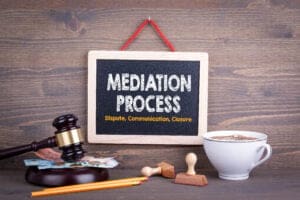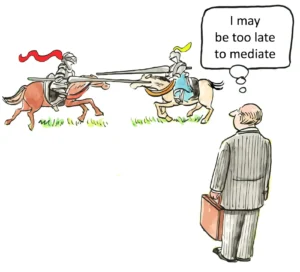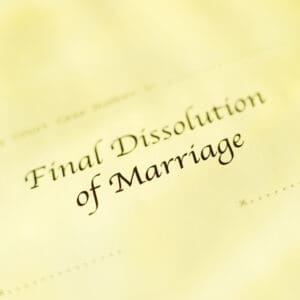How the Virginia Contributory Negligence Rule Shapes Injury Claims
Virginia uses one of the strictest liability standards in the country, and many injured residents struggle to understand how a single misstep affects compensation. Anyone pursuing recovery after a crash or profound incident benefits from learning how this doctrine influences negotiations, fault assessments, and courtroom strategy.
The Virginia contributory negligence rule creates significant obstacles for people seeking financial relief, and many residents searchfor answers about why their claims appear fragile. People also look to a legal firm like warren-law.com to understand how even a minor mistake can jeopardize a case under this strict standard. Virginia maintains this rule, even as most states rely on comparative negligence systems that apportion responsibility between parties.
Understanding the legal impact of contributory negligence in Virginia
Courts in Virginia apply the doctrine of contributory negligence when an injured person contributes in any way to the incident. Even a minor error can block recovery entirely. This zero-tolerance standard means that a claimant who fails to exercise reasonable care loses the right to collect damages.
Attorneys analyze every action leading up to an injury because opposing counsel often tries to highlight any detail that suggests carelessness. A claimant who glances at a phone, crosses outside a marked area, or travels slightly above the speed limit may face allegations of fault. Since insurance companies are aware of the strictness of this rule, they frequently argue that the claimant played a minor role in the event.
Key legal principles that influence fault determinations
Courts use established principles to decide whether a claimant showed reasonable judgment. These include the duty of ordinary care, foreseeability, and the concept of proximate cause. Judges and juries examine whether the claimant acted as a prudent person would under similar circumstances. If they determine that a reasonable person could have prevented the injury with better choices, the rule prevents compensation.
Defendants and insurers rely on investigative reports, photographs, eyewitness statements, and digital records to build a narrative suggesting the claimant made an error. They look for any detail that shifts a fraction of responsibility to the injured person. Claimants must understand how these arguments appear during litigation so they can prepare evidence that demonstrates responsible behavior.
Why contributory negligence strongly influences settlement strategy
Negotiations rarely focus solely on the severity of injuries. Instead, discussions center on fault allocation. Insurers often reduce offers when there is even a slight opportunity to argue that the claimant acted carelessly. This pressure shapes settlement decisions because trials carry a significant risk under the contributory negligence rule.
Claimants and attorneys frequently counter these tactics with detailed timelines, consistent statements, verified documentation, and expert analysis. They show that the defendant’s conduct directly caused the harm while emphasizing the claimant’s adherence to reasonable safety measures. Substantial evidence can discourage insurers from relying on this strict rule.
Complex scenarios where contributory negligence becomes a significant issue
In many cases, the injured person faces accusations that appear exaggerated or unfair. Common disputes involve unclear visibility, slippery surfaces, traffic confusion, or split-second decisions. A driver may follow traffic laws yet still confront claims that they failed to anticipate another person’s negligence. Pedestrians may use a crosswalk correctly but still face arguments that they were unable to watch for approaching vehicles.
Commercial vehicle collisions, multi-car incidents, and hazardous property conditions often result in complex fact patterns. These situations usually involve conflicting accounts, and opposing counsel typically highlights minor inconsistencies. Understanding how contributory negligence applies to complex scenarios allows claimants to organize evidence effectively.
Strategies that injured individuals use to protect their claims
People who understand the consequences of contributory negligence tend to document everything immediately. They take photographs, gather witness details, seek prompt medical treatment, and request official reports. Detailed records prevent insurers from distorting events. Medical documentation also shows how symptoms progress over time, which strengthens the connection between the injury and the incident.
Claimants often benefit from early legal analysis because attorneys interpret statutes, investigate circumstances, and counter allegations that could weaken a case. Skilled legal teams highlight the defendant’s conduct and show why a claimant could not have reasonably avoided the event. They also prepare structured narratives for negotiations, focusing on clarity, consistency, and supporting evidence.
How Virginia’s harsh negligence doctrine affects long-term outcomes
Many people underestimate the frequency of contributory negligence arguments. Even straightforward claims become complicated when insurers introduce alternative theories of fault. This rule affects not only the likelihood of obtaining compensation but also the duration of a case, the strength of negotiation positions, and the overall stress placed on injured individuals.
Those who understand Virginia’s unique approach develop realistic expectations about timelines, necessary documentation, and potential challenges. This preparation helps them remain focused on evidence and avoid statements that insurers could later misinterpret.
Key takeaways for people preparing an injury claim in Virginia
Virginia’s contributory negligence rule creates a strict environment for anyone seeking compensation. Claimants must show responsible conduct, gather strong evidence, and understand how insurers use the rule to challenge fault. Awareness of these principles helps individuals with injuries build stronger claims and stay prepared throughout the legal process.













